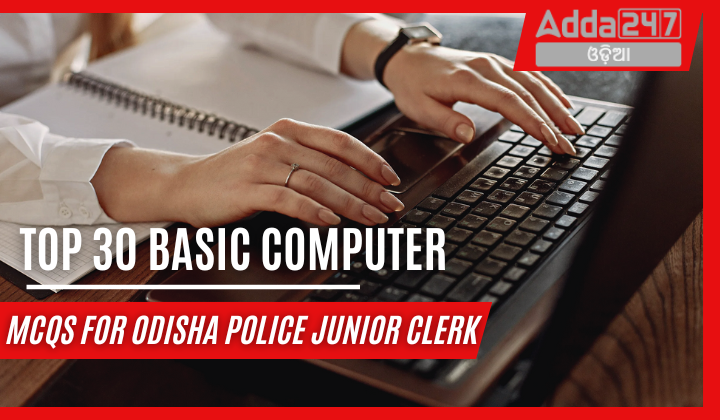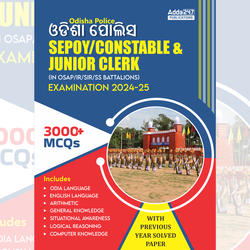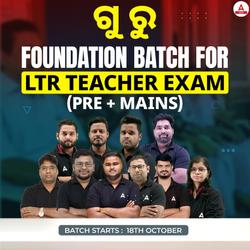Preparing for the Odisha Police Junior Clerk exam? Here are 30 important basic computer multiple-choice questions (MCQs) that can help boost your preparation. Computer knowledge is a key section, and practicing these questions will help you build confidence. Let’s dive into the questions and answers!
Top 30 Basic Computer MCQs For Odisha Police Junior Clerk
1. Who is considered the father of computers?
a) James Gosling
b) Charles Babbage
c) Dennis Ritchie
d) Bjarne Stroustrup
Answer: b
Explanation: Charles Babbage is regarded as the father of computers for designing the first mechanical computer, known as the Difference Engine.
2. What is the correct abbreviation of COMPUTER?
a) Commonly Occupied Machines Used in Technical and Educational Research
b) Commonly Operated Machines Used in Technical and Environmental Research
c) Commonly Oriented Machines Used in Technical and Educational Research
d) Commonly Operated Machines Used in Technical and Educational Research
Answer: d
Explanation: The term COMPUTER stands for “Commonly Operated Machines Used in Technical and Educational Research.” It is derived from the word “compute,” reflecting the computer’s primary function of calculation.
3. Which of the following correctly defines a computer?
a) A machine that can be programmed to perform arithmetic or logical operations automatically
b) A device that understands binary language, composed of 0s and 1s
c) A programmable electronic device that stores, retrieves, and processes data
d) All of the above
Answer: d
Explanation: A computer is a machine that can perform automatic calculations and logical operations. It works in binary language and processes data as a programmable device.
4. What does CPU stand for?
a) Computer Processing Unit
b) Computer Principle Unit
c) Central Processing Unit
d) Control Processing Unit
Answer: c
Explanation: CPU stands for Central Processing Unit, which acts as the brain of the computer, handling instructions and processes.
5. Which language does a computer understand natively?
a) C Language
b) Assembly Language
c) Binary Language
d) BASIC
Answer: c
Explanation: A computer natively understands binary language, which consists of 0s and 1s. High-level languages need compilers or interpreters, while assembly language requires an assembler to be translated into binary.
6. Which computer language is composed only of binary codes?
a) Pascal
b) Machine Language
c) C
d) C#
Answer: b
Explanation: Machine language consists only of binary codes, which are directly understood by the computer without the need for translators or interpreters.
7. Which component is considered the brain of a computer?
a) Central Processing Unit
b) Memory
c) Arithmetic and Logic Unit
d) Control Unit
Answer: a
Explanation: The CPU is the brain of the computer, containing both the control unit and arithmetic/logic unit, responsible for executing all operations.
8. Which of the following is NOT a characteristic of computers?
a) Versatility
b) Accuracy
c) Diligence
d) I.Q.
Answer: d
Explanation: Computers have no inherent intelligence (I.Q.) and only follow programmed instructions. However, they are accurate, versatile, and diligent, capable of performing tasks without errors for extended periods.
9. What is the smallest unit of data in a computer?
a) Bit
b) KB
c) Nibble
d) Byte
Answer: a
Explanation: A bit is the smallest unit of data, representing a binary digit (0 or 1). Four bits make up a nibble, eight bits form a byte, and 1024 bytes equal a kilobyte (KB).
10. Which unit converts user input into a form understandable by the computer?
a) Output Unit
b) Input Unit
c) Memory Unit
d) Arithmetic & Logic Unit
Answer: b
Explanation: The input unit converts user data into binary format, which the computer can understand. The output unit delivers results to users in a human-readable format.
11. Which monitor type resembles a television and is often used with non-portable computers?
a) LED
b) LCD
c) CRT
d) Flat Panel Monitors
Answer: c
Explanation: CRT (Cathode Ray Tube) monitors resemble televisions and are used with desktop computers. They are bulkier compared to modern flat-panel displays.
12. Which of the following is not a computer code?
a) EDIC
b) ASCII
c) BCD
d) EBCDIC
Answer: a
Explanation: EDIC is not a recognized computer code. ASCII (American Standard Code for Information Interchange), BCD (Binary-Coded Decimal), and EBCDIC (Extended Binary Coded Decimal Interchange Code) are all valid coding systems.
13. What part of a processor contains hardware for all required computer operations?
a) Controller
b) Registers
c) Cache
d) Data path
Answer: d
Explanation: The data path contains the hardware needed to perform operations within a processor, with the controller directing the data path’s tasks.
14. What type of software controls computer operations?
a) User
b) Application Software
c) System Software
d) Utility Software
Answer: c
Explanation: System software manages computer hardware and system resources, enabling the system to function properly.
15. Which device uses positional notation to represent decimal numbers?
a) Pascaline
b) Abacus
c) Computer
d) Calculator
Answer: b
Explanation: The abacus, an ancient calculating tool, uses positional notation to represent decimal numbers.
16. Which of the following is used in EBCDIC?
a) Super Computers
b) Mainframes
c) Machine Codes
d) Programming
Answer: b
Explanation: EBCDIC (Extended Binary Coded Decimal Interchange Code) was developed by IBM and is primarily used in IBM mainframe environments.
17. Which of the following are physical devices of a computer?
a) Hardware
b) Software
c) System Software
d) Package
Answer: a
Explanation: Hardware refers to the tangible, physical components of a computer system, whereas software is a set of instructions or programs.
18. Which of the following defines the assigned ordering among characters used by a computer?
a) Accumulation
b) Sorting
c) Collating Sequence
d) Unicode
Answer: c
Explanation: The collating sequence specifies the order of characters. It can vary based on the code or system in use.
19. Which of the following storage systems uses a robotic arm to connect or disconnect offline mass storage media according to system demands?
a) Magnetic
b) Secondary
c) Virtual
d) Tertiary
Answer: d
Explanation: Tertiary storage involves robotic systems to manage large-scale data storage, mainly in enterprise or scientific settings.
20. What is the term for the interval between a computer requesting data from a disk and the operation being completed?
a) Disk utilization time
b) Drive utilization time
c) Disk access time
d) Disk arrival time
Answer: d
Explanation: Disk arrival time is the time interval between the request for data and the completion of the data transfer.
21. Which device facilitates communication between a computer and the external world?
a) Compact
b) I/O
c) Drivers
d) Storage
Answer: b
Explanation: I/O (Input/Output) devices allow communication between the computer and external entities, often called peripherals.
22. Which devices enable direct data entry from source documents into a computer system?
a) System Access devices
b) Data acquiring devices
c) Data retrieving devices
d) Data Scanning devices
Answer: d
Explanation: Data scanning devices directly input data from physical documents into a computer, reducing the need for manual data entry.
23. Which device converts maps, pictures, and drawings into digital form for storage in computers?
a) Image Scanner
b) Digitizer
c) MICR
d) Scanner
Answer: b
Explanation: A digitizer converts graphical information into a digital format, commonly used in CAD (Computer-Aided Design) for architecture and engineering.
24. Which of the following can access a server?
a) Web Client
b) User
c) Web Browser
d) Web Server
Answer: a
Explanation: A web client is any system or device that can access a web server, usually using the HTTP protocol.
25. What language is made up of binary-coded instructions?
a) High-level
b) BASIC
c) C
d) Machine
Answer: d
Explanation: Machine language consists of binary instructions that the computer hardware directly executes.
26. Which package allows users to store and retrieve personal information on a computer?
a) Personal assistance package
b) Graphics package
c) Spreadsheet package
d) Animation package
Answer: a
Explanation: A personal assistance package helps users manage personal tasks like scheduling, finances, and contacts.
27. What is created when a user opens an account on a computer system?
a) SFD
b) MFD
c) Subdirectory
d) RFD
Answer: c
Explanation: A subdirectory is generated when a user account is created, functioning as an organizational tool for files within the system.
28. Which technique marked the beginning of computer communications?
a) User Environment
b) Batch Environment
c) Time Sharing
d) Message Passing
Answer: c
Explanation: Time-sharing allowed multiple users to interact with a computer simultaneously, marking a milestone in the development of computer communication.
29. In which technique are dumb terminals connected to a central computer system?
a) Time Sharing
b) Message Passing
c) Batch Environment
d) User Environment
Answer: a
Explanation: In time-sharing, terminals (often referred to as “dumb” terminals) share the resources of a central computer system.
30. Which service allows a user to log into another computer via the Internet?
a) Email
b) UseNet
c) Telnet
d) FTP
Answer: c
Explanation: Telnet is a protocol that enables remote login to another computer over the Internet.





